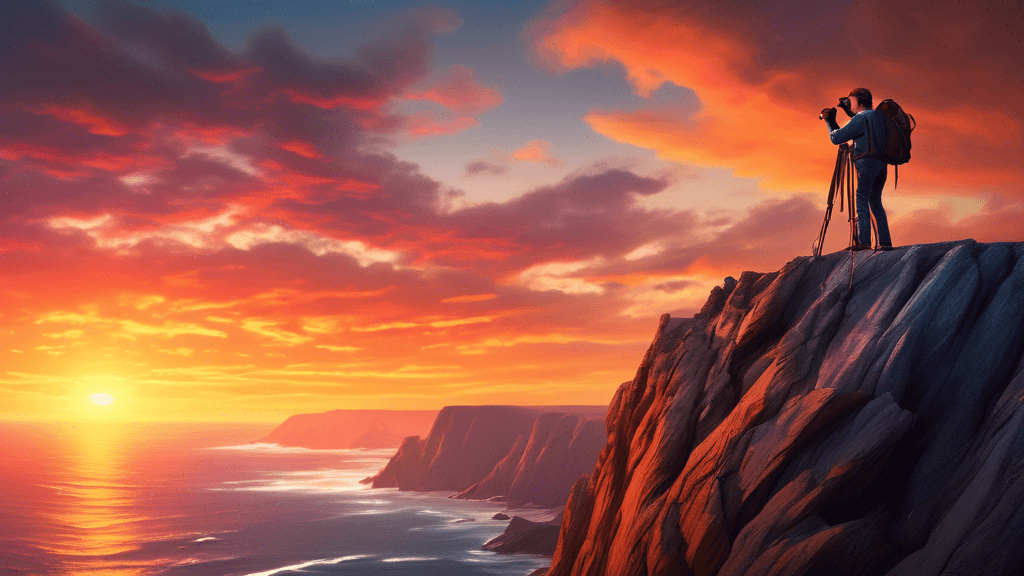
Capturing the Edge: The Art of Cliffside Photography
Share
The Thrill and Skill of Cliffside Photography
For those who seek the thrill of heights and the beauty of vast, open landscapes, cliffside photography offers a uniquely exhilarating perspective. This form of photography is not just about capturing stunning views from the edge; it's an art that combines technical skills with a deep understanding of the natural environment. But who exactly dives into this niche of photography, and what should they know to not only excel but also ensure their safety?
Who Ventures into Cliffside Photography?
Cliffside photography is for the daring. It attracts adventurers, nature lovers, and those passionate about landscape photography who are willing to go the extra mile—quite literally—to capture the perfect shot. From professional photographers to enthusiastic hikers with cameras, the cliffs call to those who are undeterred by heights and are keen on portraying the drama of nature from an elevated perspective.
Understanding the Risks
Before delving into techniques and equipment, one must acknowledge and prepare for the risks involved in cliffside photography:
- Safety First: The paramount concern is safety. Slips, trips, and falls are real dangers. Appropriate footwear, weather awareness, and cautious movements are essential.
- Environmental Hazards: Weather can change abruptly, and high winds are common on cliffs. Monitoring weather conditions is crucial for personal safety and gear protection.
- Legal Boundaries: It’s vital to know if photography is permitted in a specific cliffside area and respect any boundary restrictions, preserving the natural habitat.
The Technical Edge: Gear and Techniques for Cliffside Photography
The complexity of cliffside environments requires specialized equipment and techniques:
- Durable Camera Equipment: A sturdy, weather-sealed camera and lenses are recommended to withstand harsh environments. A wide-angle lens is ideal for expansive landscape shots, while a telephoto lens can capture distant details sharply.
- Stable Tripod: Using a reliable tripod ensures stability and sharpness in photos, especially in windy conditions. Some photographers opt for lighter, carbon-fiber tripods for easier mobility.
- Filters: Neutral density filters are crucial for managing the intense light and glare often encountered during cliffside shoots, allowing for the use of slower shutter speeds and wider apertures.
Technique-wise, photographers need to master the art of framing. Positioning the horizon correctly is pivotal in landscape photography, generally keeping it at the upper or lower third of the image to enhance the composition’s depth or emphasize either sky or land.
Capturing the Moment: When and How?
Timing is everything in cliffside photography. The 'golden hours'—shortly after sunrise or before sunset—provide the most flattering light, casting a warm glow and long shadows that accentuate the rugged textures of cliff landscapes.
However, some photographers also brave the 'blue hour', the period just before sunrise or after sunset, which offers a serene and often surreal atmosphere with cooler tones. This time is particularly suitable for long-exposure photography, capturing the movement of clouds and water against still cliffs.
Inspiration from the Masters
Several renowned landscape photographers have excelled in cliffside photography. Ansel Adams, known for his black and white landscapes, often emphasized the dramatic contrast and textures that cliffs provide. His commitment to depicting nature in its true form is a continuing source of inspiration.
Nature never goes out of style. It is the art of God painting on the canvas of time and space, once remarked Adams.
Is Cliffside Photography for You?
Are you drawn to the daunting but breathtaking vistas offered by cliffside photography? Does the challenge of capturing nature’s majesty from a heightened vantage point thrill you? If so, this may be your calling within the vast world of photography. However, remember, the journey to mastering cliffside photography demands as much respect for personal safety and environmental conservation as it does for technical skill and artistic vision.
If you're ready to take your photography to the edge—literally and figuratively—equip yourself with knowledge, practice your skills, and always tread lightly on the delicate ecosystems you aim to capture. And perhaps, in your next cliffside expedition, you'll not only achieve the perfect shot but also a profound connection with the natural world. Ready to capture that edge?





